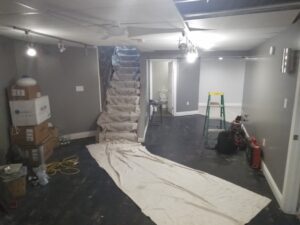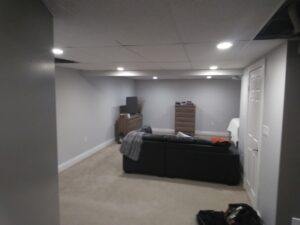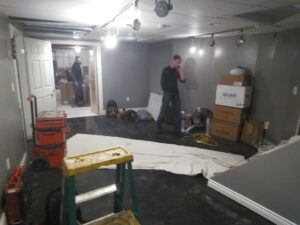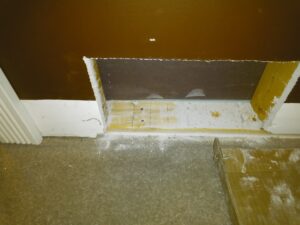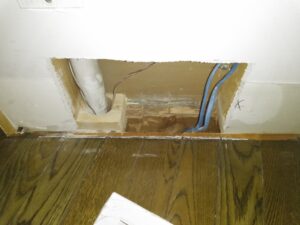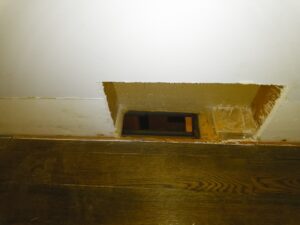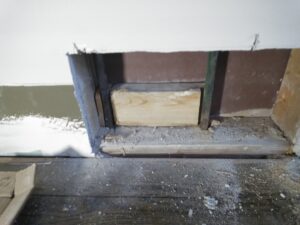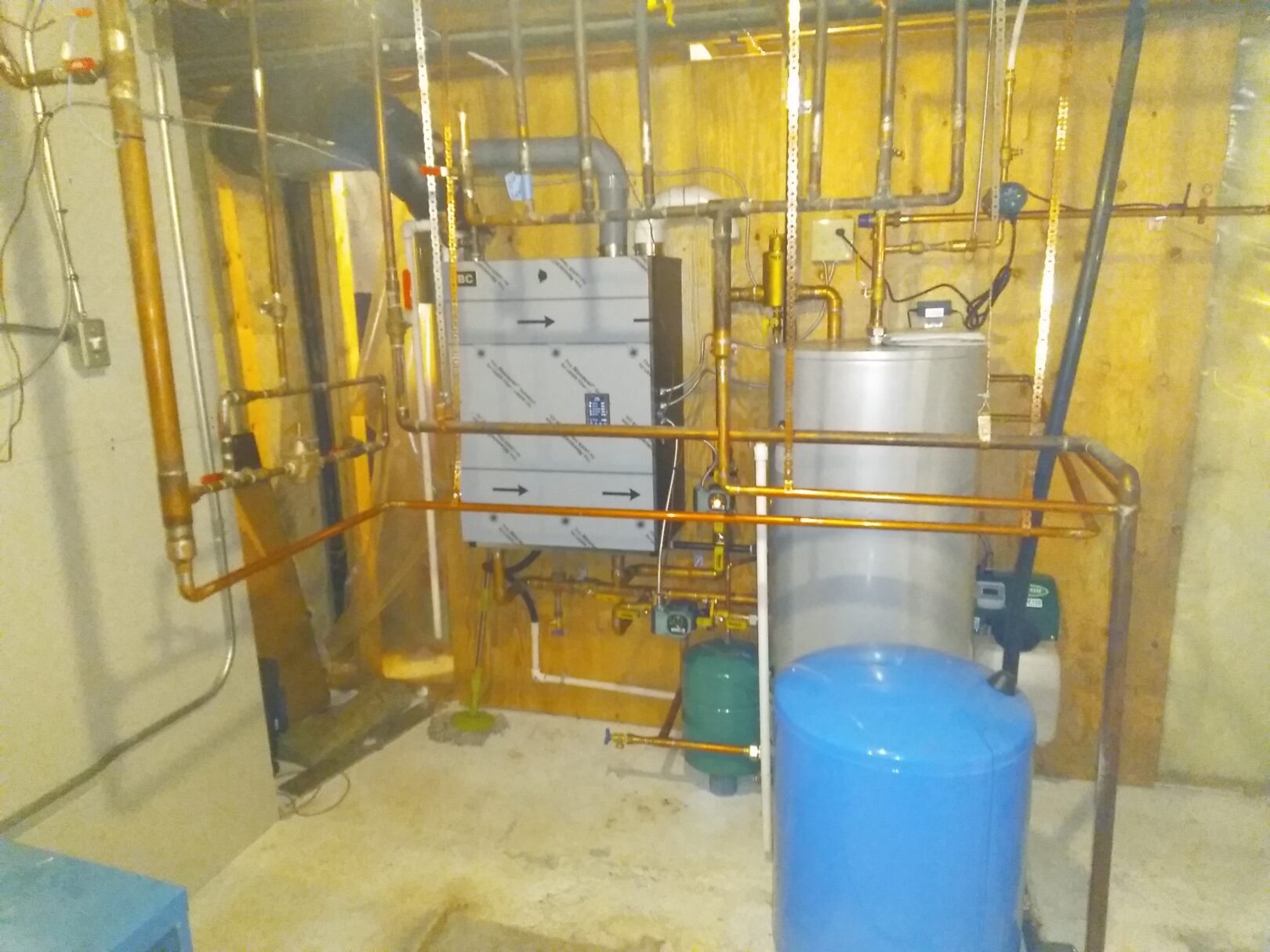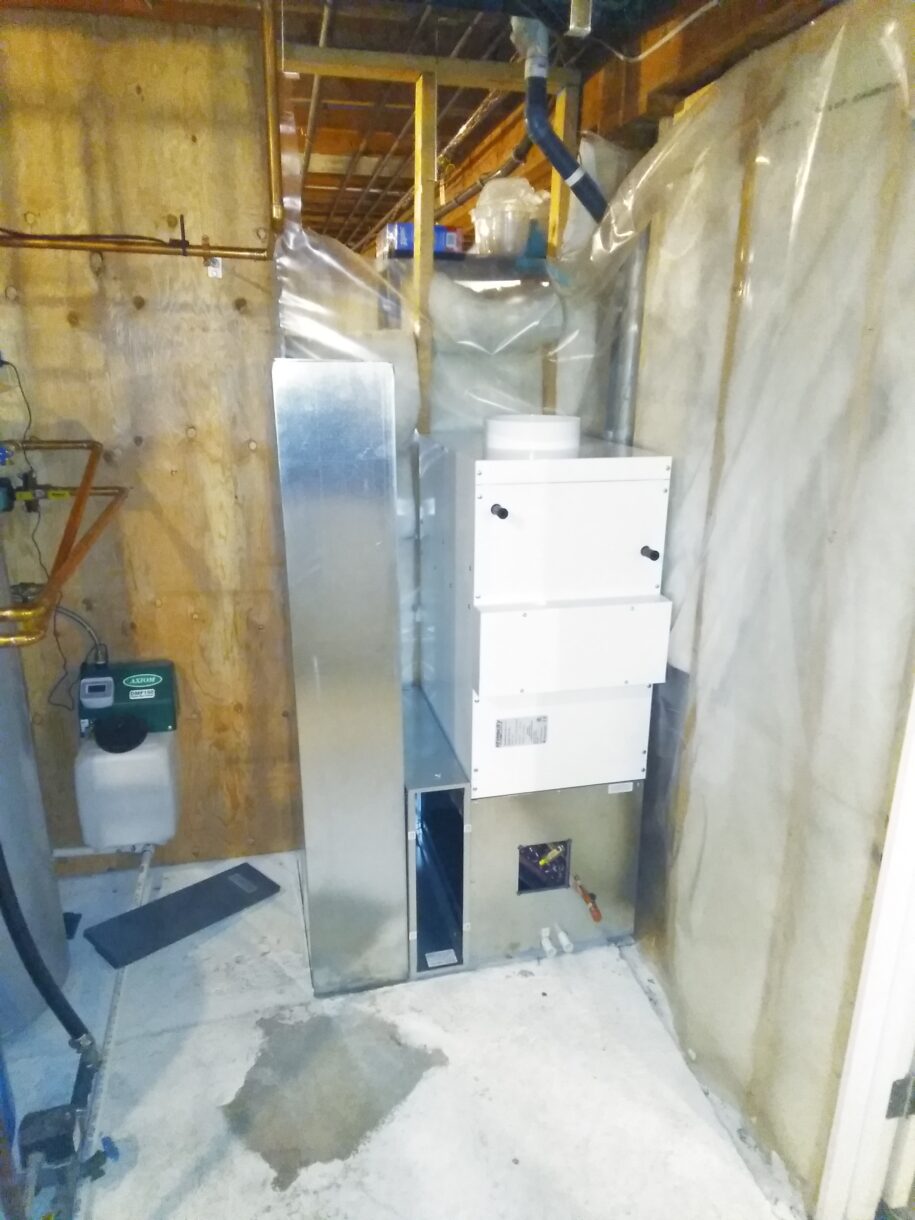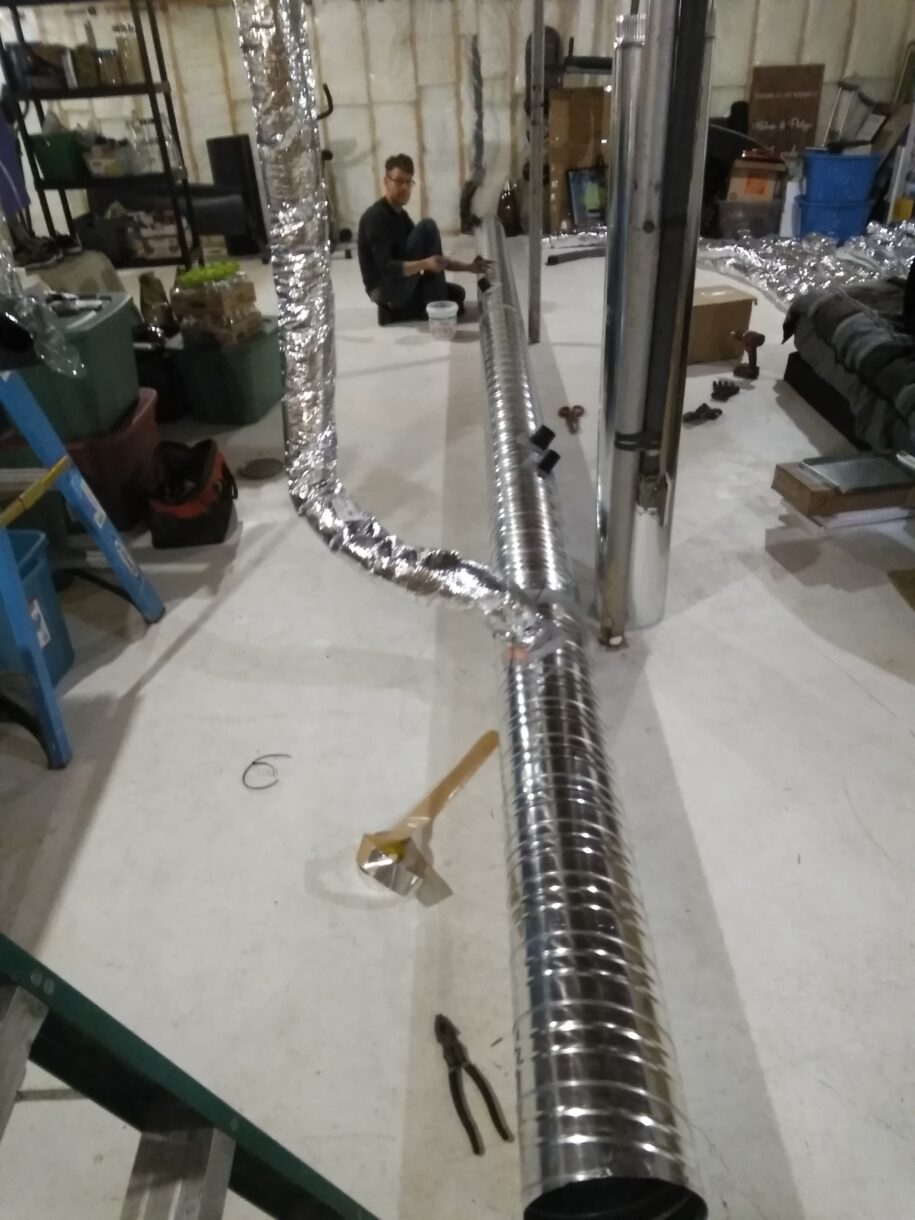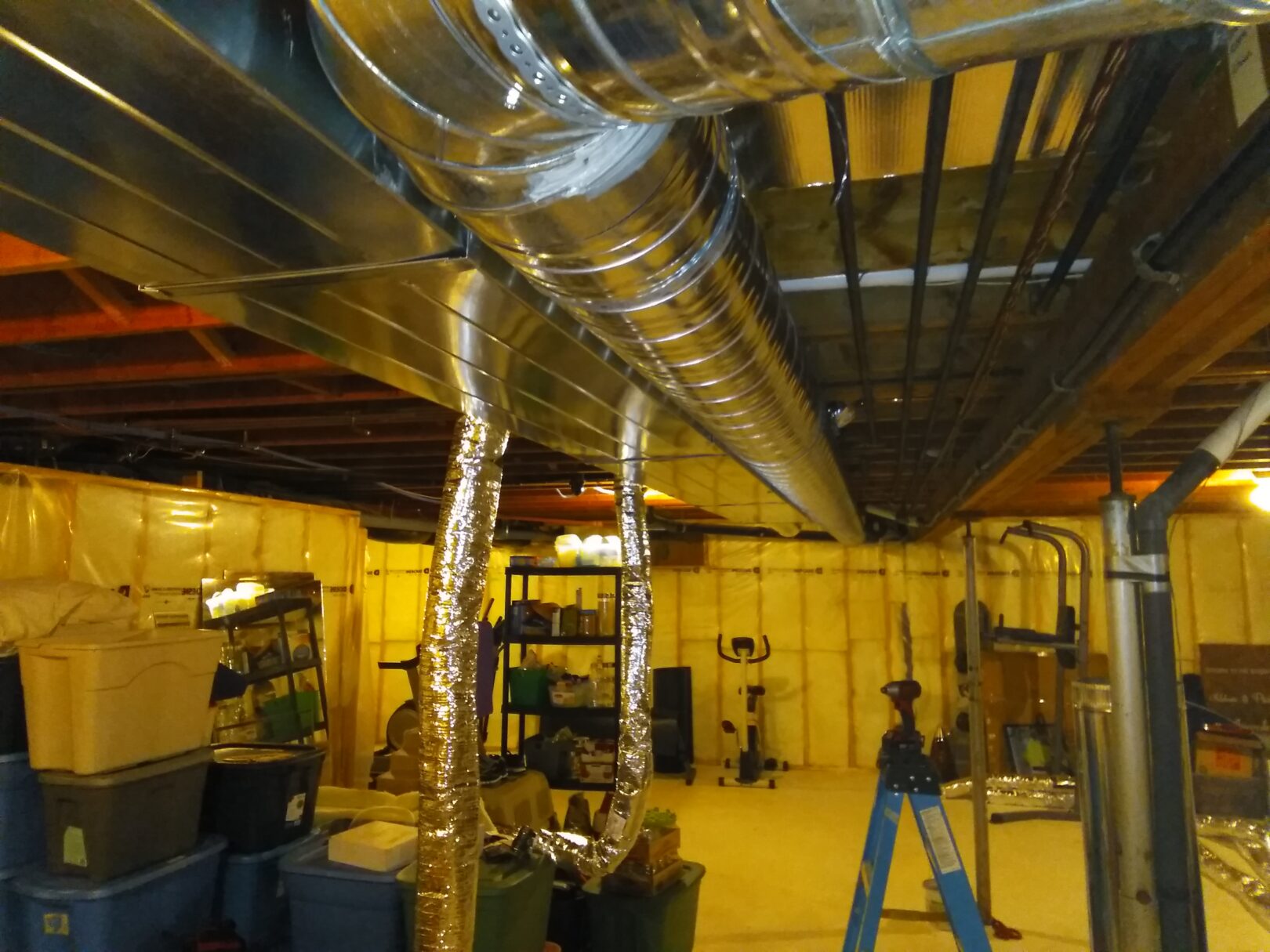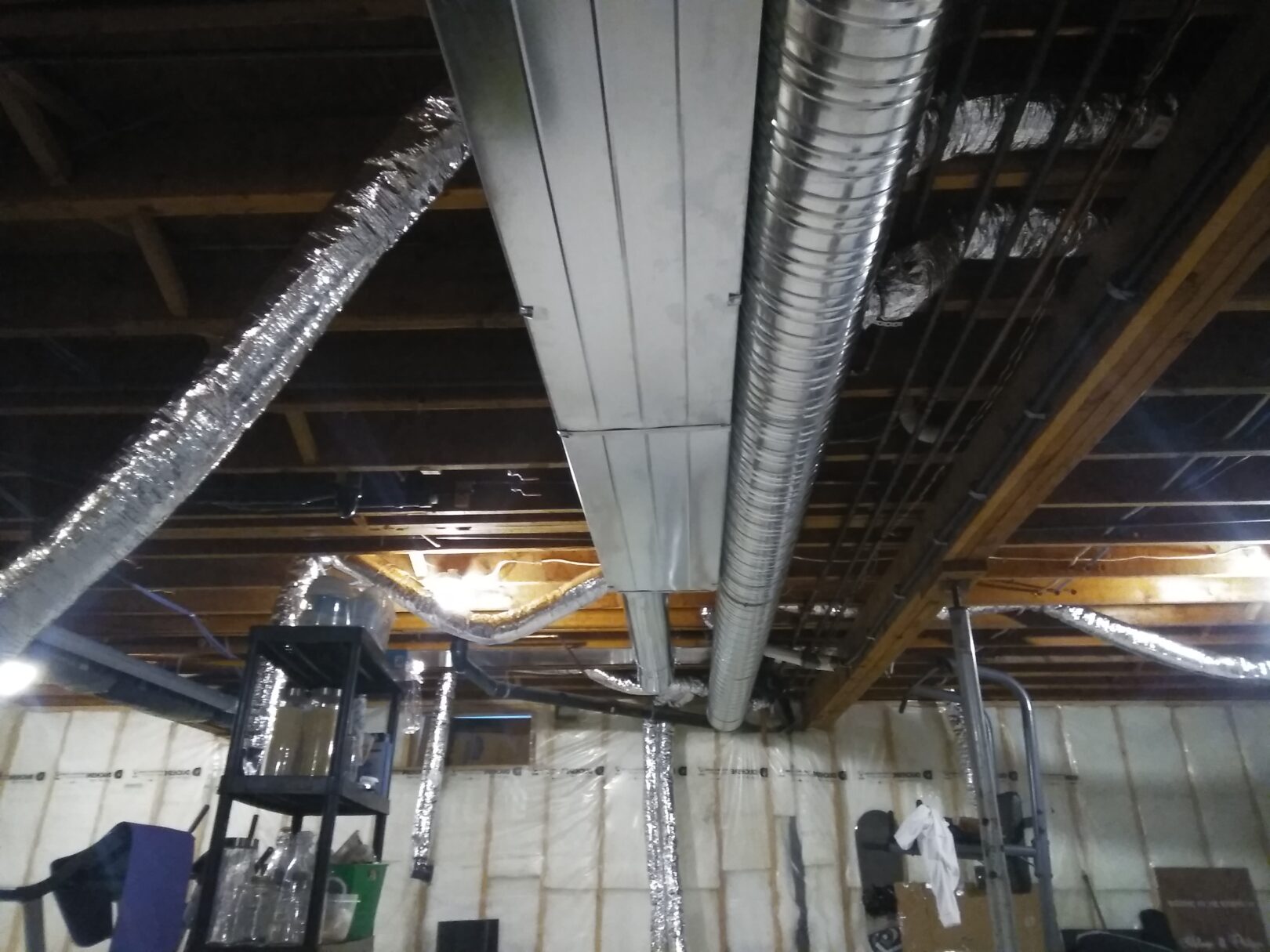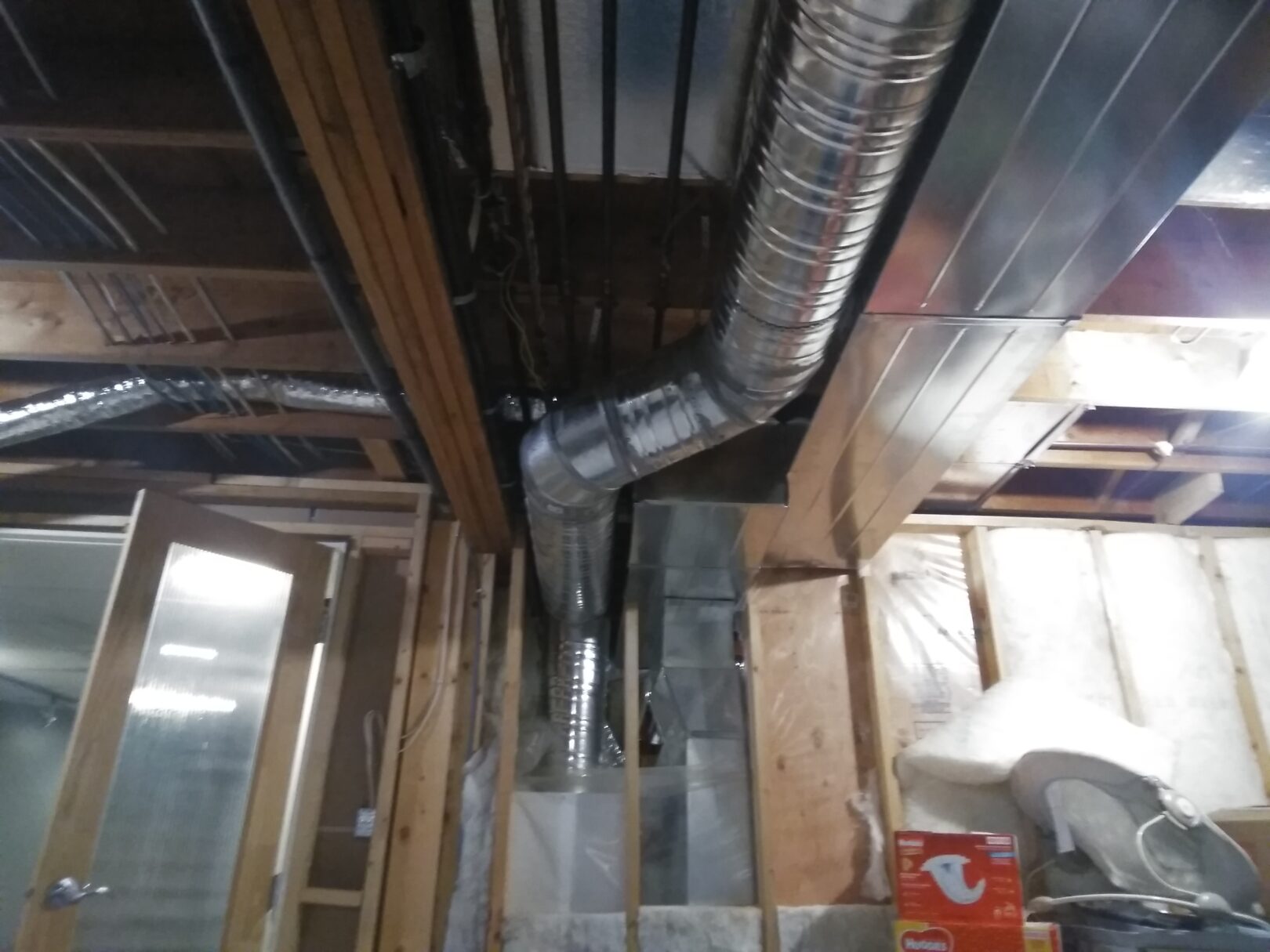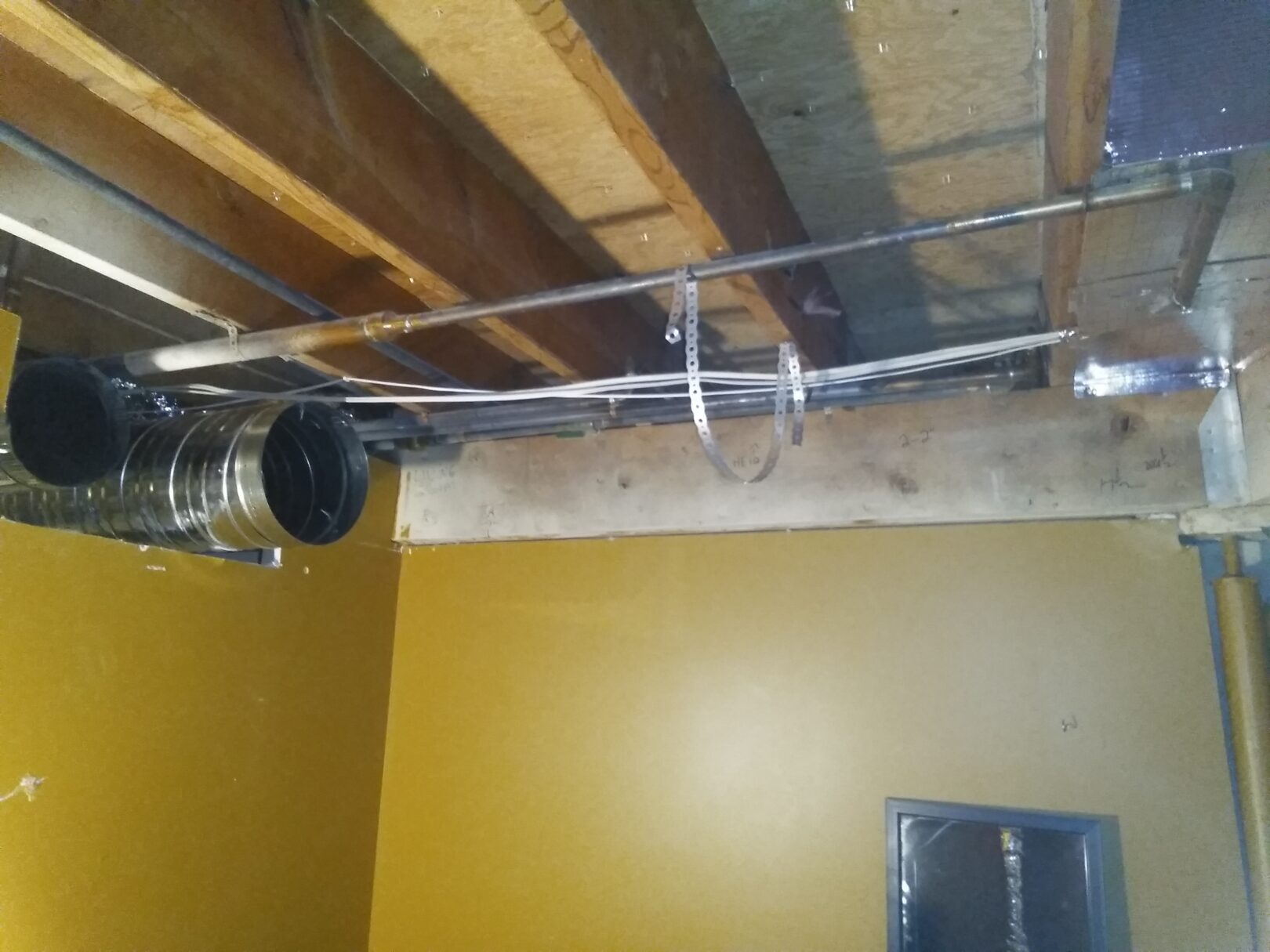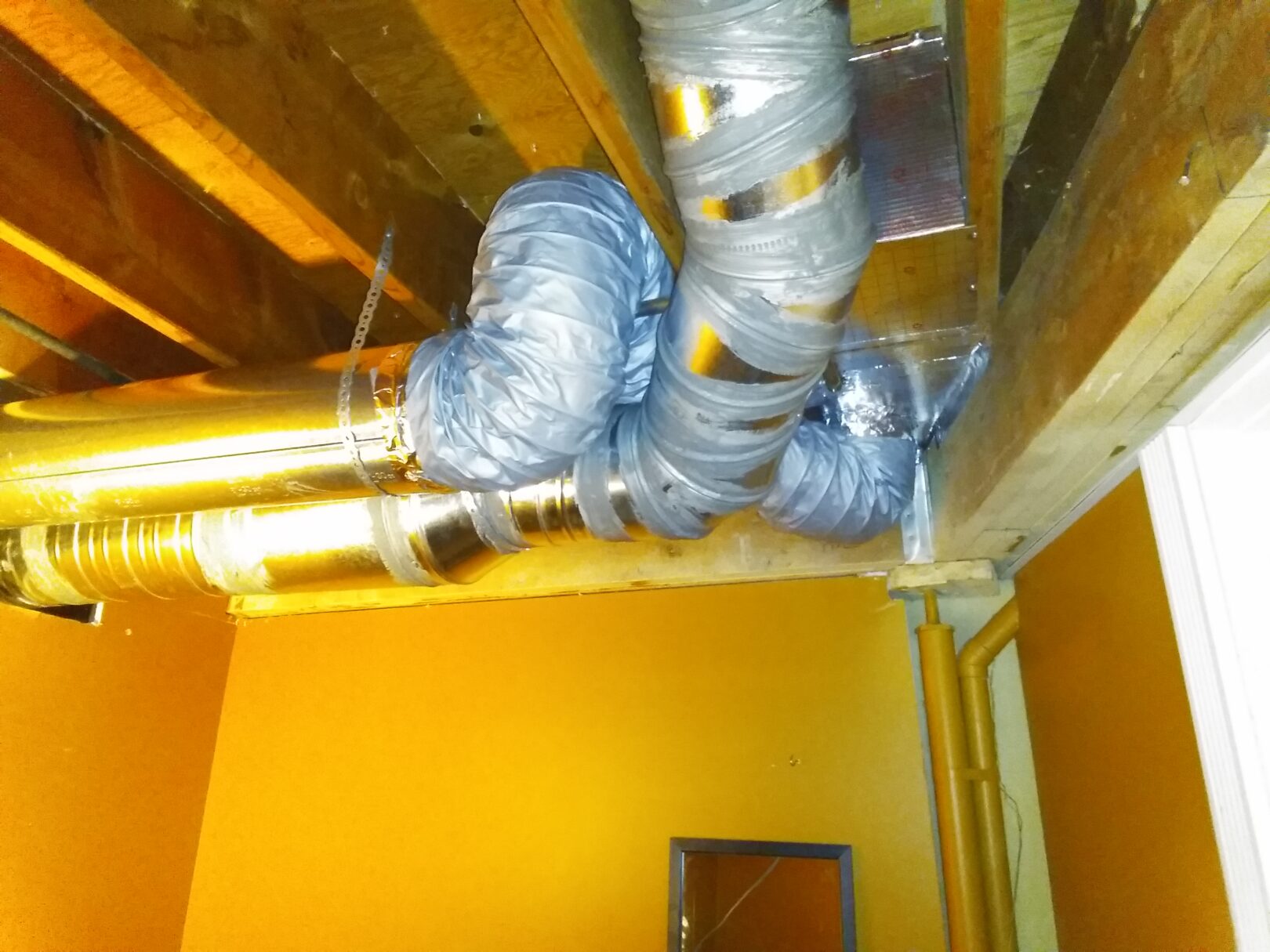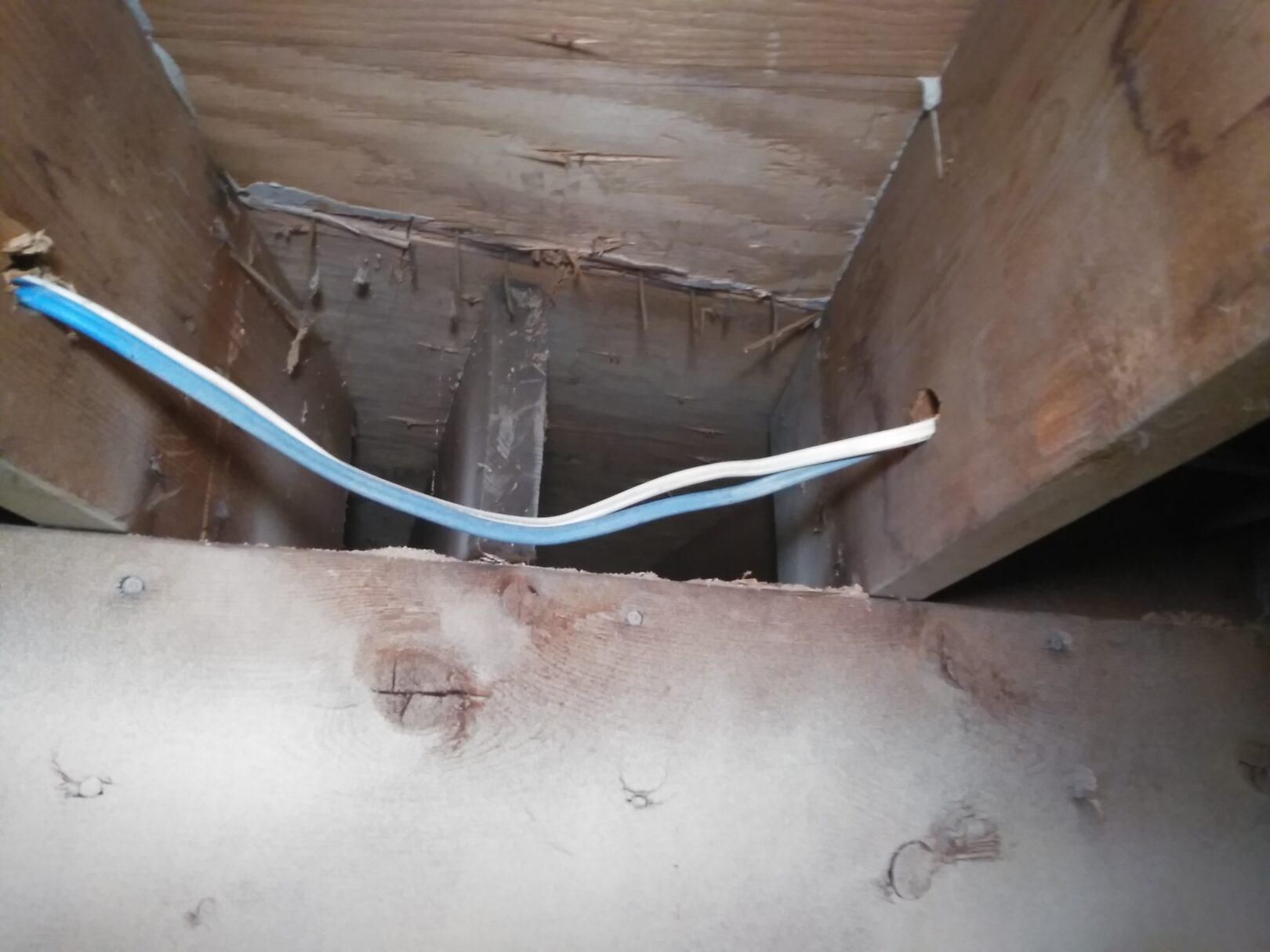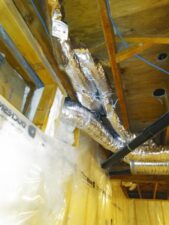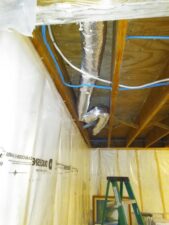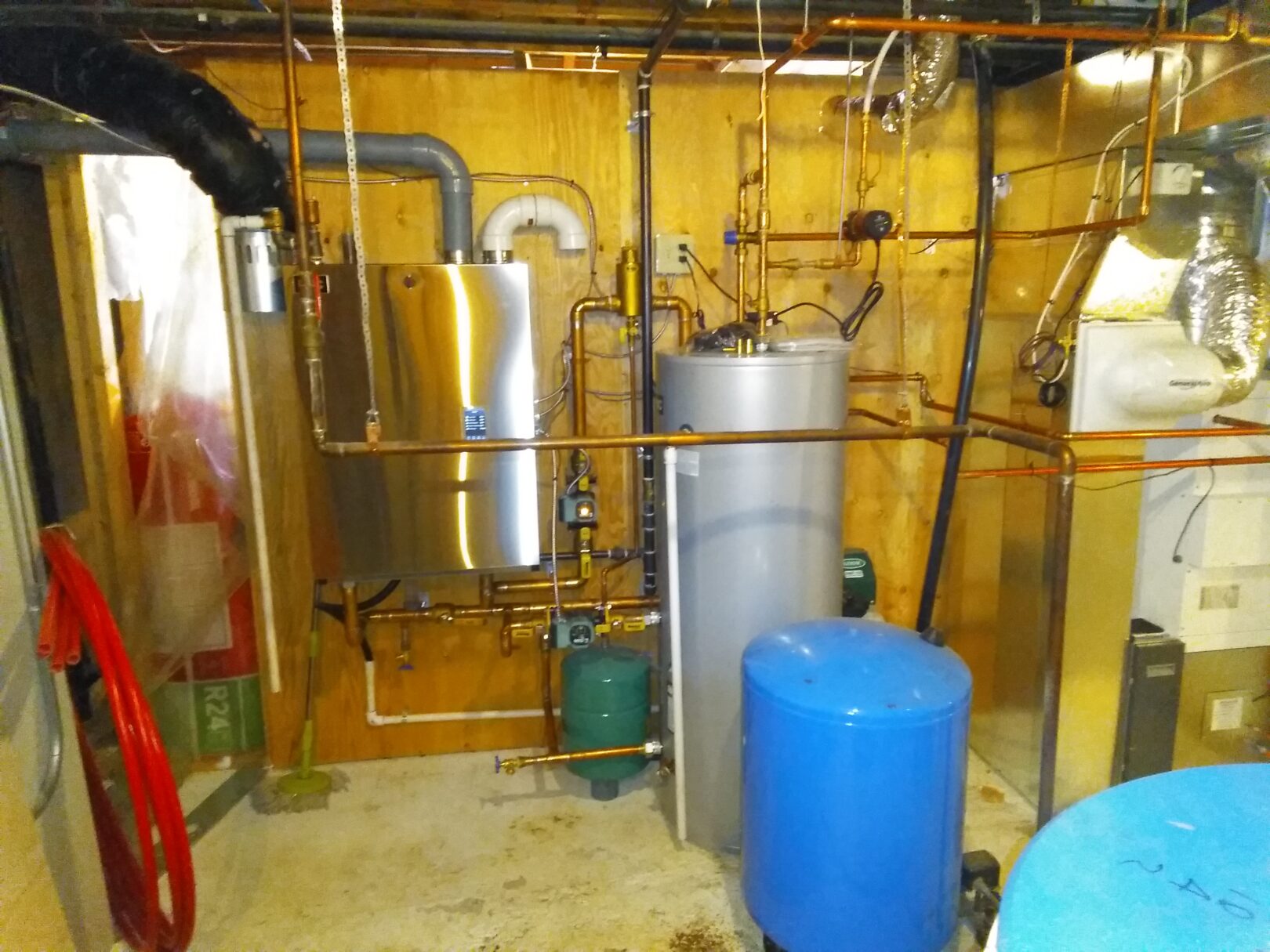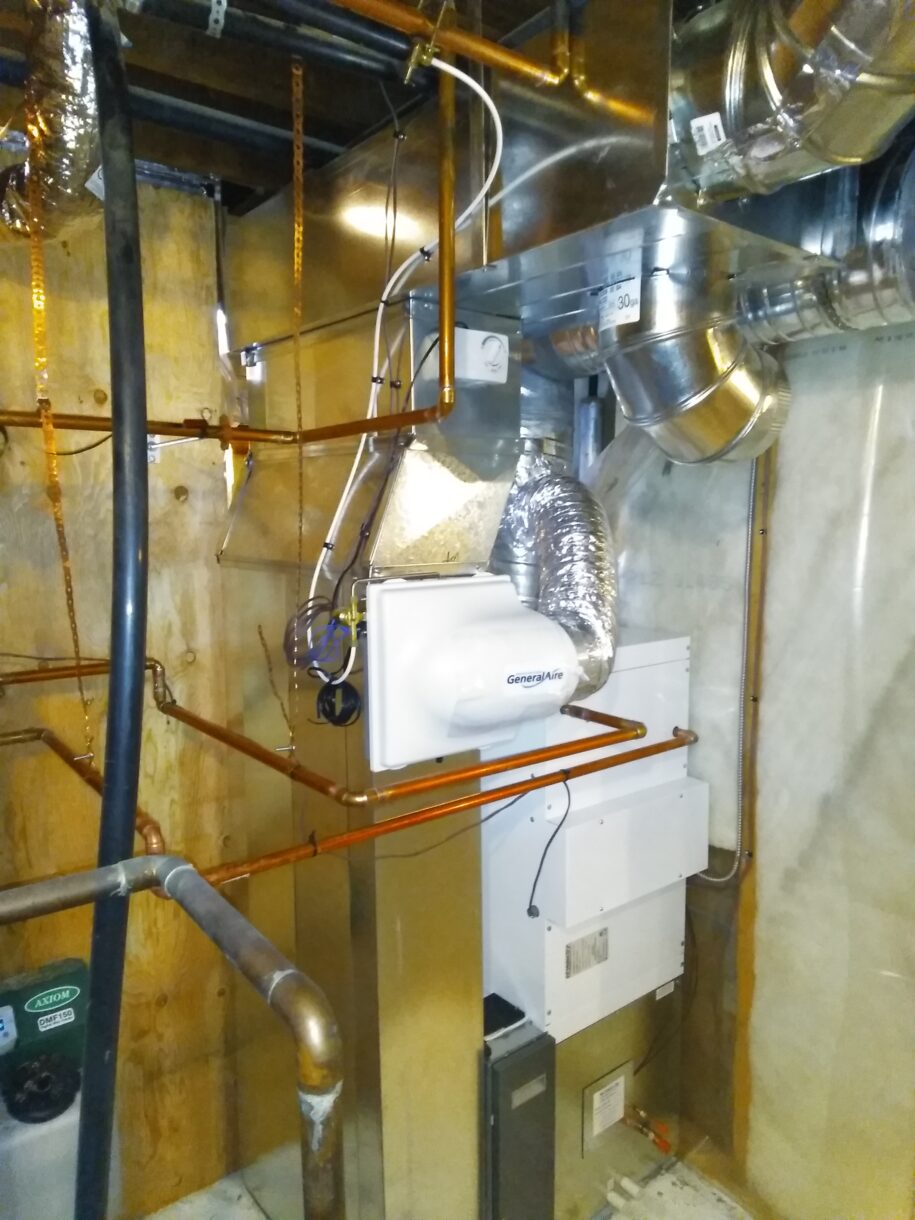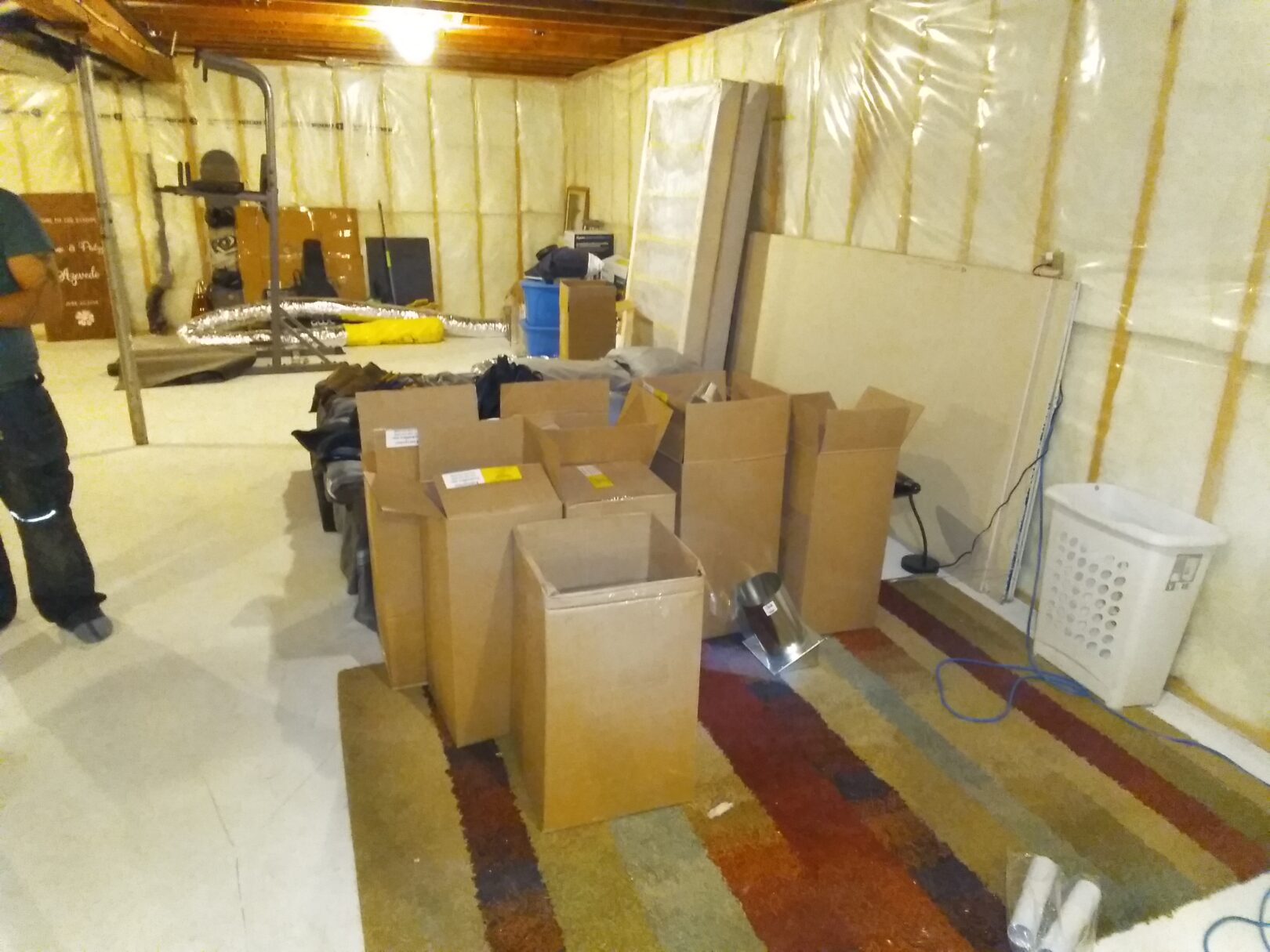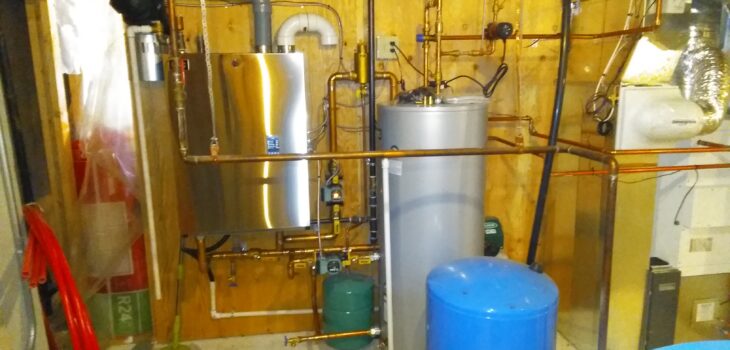 At Home
At Home
Hi-Velocity Installation
The company I have been working for recently undertook an installation for Hi-Velocity Systems. They are situated in Edmonton, have been around for 35 years, and to the best of my knowledge, do all their own manufacturing locally, which is utterly uncommon in this day and age. 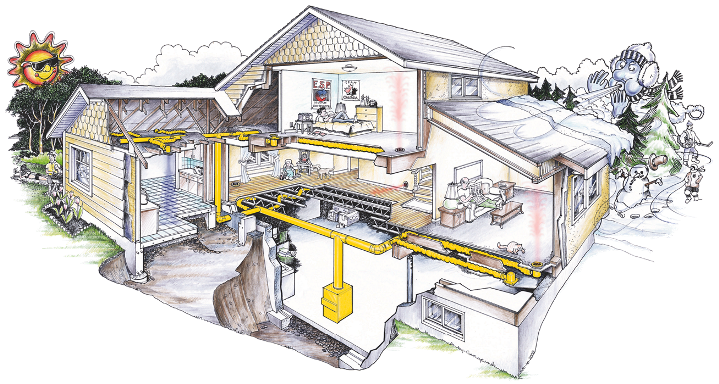
The main emphasis of this type of system seems to be the ability to create a uniform indoor temperature, floor to ceiling, by using small diameter vents to supply high velocity air, thus resulting in a venturi effect similar to a carburetor. The design relies upon airtight plenums on the heat run side to maintain pressure throughout the system.
To add to this, VOC (volatile organic compound) filters can be added inline with the system to actively remove house-borne contaminants emitted by various types of carpeting, paints, and other items not manufactured with human health in mind. The list is long.
Heat is provided by a boiler and coil system. I assume that the target audience of such a system is higher income families with a greater than average concern for indoor air quality. Personally, I just open a window, but given our current environment of hyper-health consciousness, there is a demand.
While this is a general description of the system, the greatest variable is always the house it is being installed into.
The Build.
This is a retro-fit of a house built in the 70’s, heated with a boiler and baseboard heaters. The house is about 3000 sq. ft. with an unusual floor design, the result of which is difficult transitions between areas. The pic below doesn’t go far enough to tell the tale, but was typical.
However, unusual in many installations, there was lots of elbow room, which is always nice.
Because there was never a conventional heating system, no consideration was made toward placing studs directly over joists, as is usual in general construction practices. This is a nuisance when it comes to return air pathways, as you can see below…
…and was consistent throughout all of them…
Water lines held in with blocking are always fun… Every one of them was a PITA, but was enough for what was needed.
The boiler room was typical I guess, though poorly thought out, IMO..
The furnace was relatively similar… air in, air out.
In this case the bottom section is a coil heat exhanger for the boiler to the left. Within the white case is what is supposed to make this system special. It houses a VFD (variable frequency drive) motor which propels air into the heat run above (not yet in place). Careful attention is given to the entire heat run side of this system to ensure a good seal, and in conjunction with small orifice outlets and some careful math on the part of the designers, a pressurised system is maintained to create venturi effects in each room throughout the house.
Spiral ducting is used and sealed with duct seal vs. tin tape, and the take-offs are cut in and installed prior to hoisting it into place. Lots of measuring and figuring here as there is lots overhead as well as the upstairs layout to be concerned with.
Up and in. Pre-planning suspension was essential, but not too difficult.
Return air is less of a concern, so typical of other installations and done beforehand.
Other areas of the house had significant challenges.
Not the least of which was enthusiastic nailing into simple blocking between areas. WTF over…
Again, no consideration was given to ducting upon construction, so managing to place 8″ spiral through here to vent the upper living area was hard earned and with a side of luck.
Once the appropriate ducting was in the area, the small ducts were easy to place, with the only consideration being to leave them the full length so as to not affect the calculations during design. Holes had to be measured and cut through the flooring above, which included slate, tile, vinyl, and the full gambit of surfaces, but that was someone elses’ problem. Mounting from below was 4 screws in a boot, and tin tape. Easy.
The ducting was held in with a simple staple gun, you could twist, turn, or otherwise jemangle them as needed to make it work.
The plumber did a nice job of cleaning up the area somewhat with the new boiler…
The remaining duct work was set in place, and aside from a few electrical components that the manufacturer would finish wiring, the rest was cleanup and Christmas.
All in all, an interesting job, with it’s own challenges and scope. I have an interest in VFD’s, having had some exposure to them in prior employment. They have a future, as they are much more efficient than regular motors, and entire courses are given on how to dial them in precisely. It’s no wonder all the wiring was done by the manufacturer.. A company called Electram in Edmonton is one local leader in this regard. Not cheap, though. Not cheap at all.
It was a good way to end out 2021.

